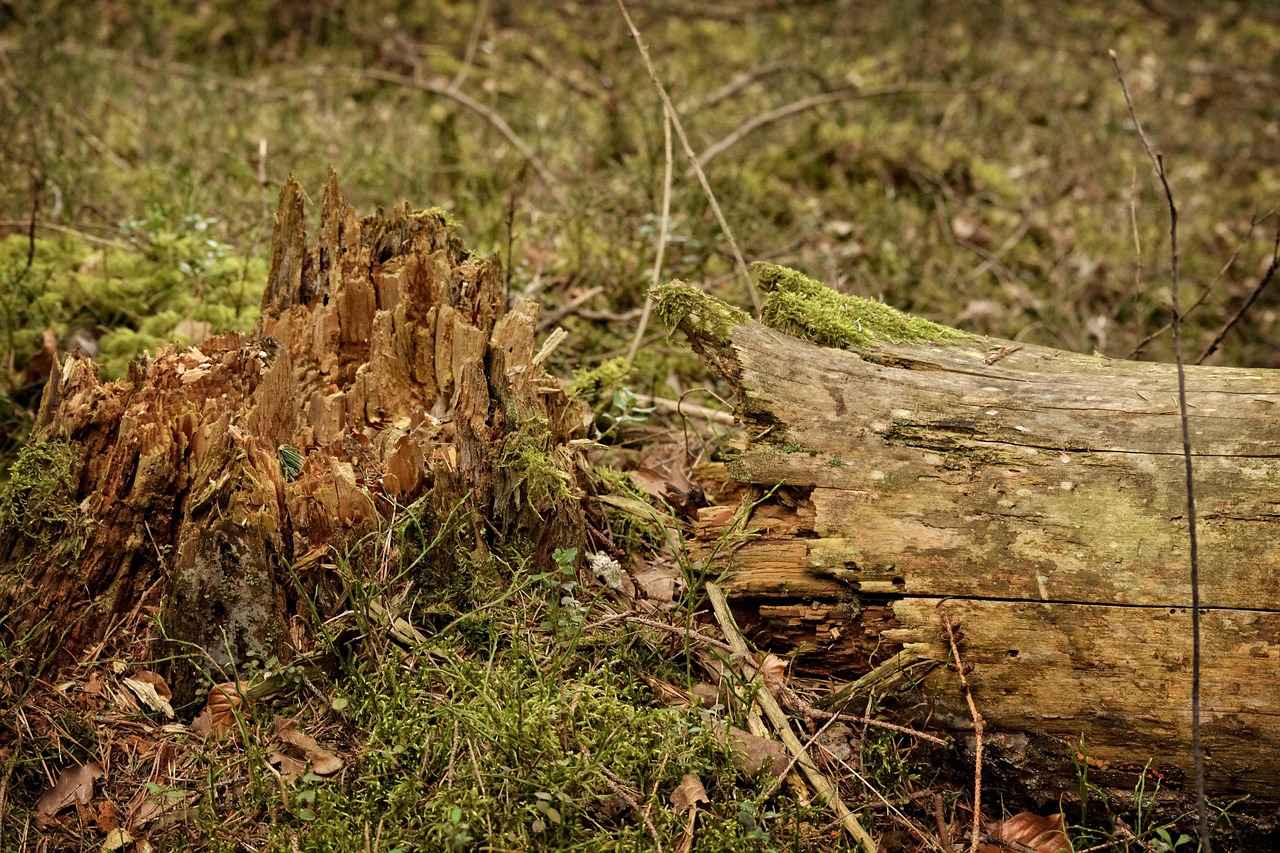This article provides a comprehensive guide on bleeding a clutch master cylinder, ensuring optimal performance and safety in your vehicle. Proper maintenance of your clutch system is essential for smooth operation and preventing potential damage.
Understanding the significance of bleeding the clutch master cylinder is crucial for vehicle performance. Air trapped in the hydraulic system can lead to poor clutch engagement, resulting in difficulties when shifting gears. This can compromise both performance and safety, making it imperative to address any air in the system promptly.
Having the right tools simplifies the bleeding process. Essential tools include:
- A wrench – for loosening and tightening the bleeder valve.
- A clear plastic tube – to monitor fluid flow and prevent spills.
- Brake fluid – ensure you have the correct type for your vehicle.
Setting up a clean and organized workspace is vital for an efficient bleeding process. Ensure you have adequate lighting and all necessary tools within reach. This will help you focus on the task without unnecessary interruptions.
Following a systematic approach is key to successfully bleeding the clutch master cylinder. Here’s a detailed breakdown of the process:
Finding the bleeder valve is the first step in the bleeding process. Typically located on the slave cylinder, refer to your vehicle’s manual for exact positioning. Make sure to clean the area around the valve to prevent dirt from entering the system.
Attach a clear plastic hose to the bleeder valve. This allows you to see the fluid as it flows out, which is crucial for determining when all air has been expelled. Open the valve slowly and watch for fluid without bubbles.
Avoiding common pitfalls can save time and ensure a successful bleeding process. Here are frequent mistakes to steer clear of:
Using incorrect brake fluid can cause damage to the hydraulic system. Always refer to your vehicle’s specifications to select the correct type of brake fluid, as using the wrong one can lead to costly repairs.
Failing to check for leaks after bleeding can lead to ongoing issues. Always inspect the bleeder valve and surrounding areas for any signs of fluid leakage to ensure everything is sealed properly.
Testing the clutch after the bleeding process ensures everything is functioning correctly. Follow these steps:
After bleeding, test the engagement and disengagement of the clutch. Press the clutch pedal and ensure it feels firm and responsive. If it feels spongy, additional bleeding may be required.
Check the fluid level in the reservoir after bleeding. Maintaining the correct fluid level is crucial for optimal performance. If the level is low, top it up with the appropriate brake fluid.
By following these steps, you can effectively bleed your clutch master cylinder, ensuring your vehicle operates smoothly and safely.
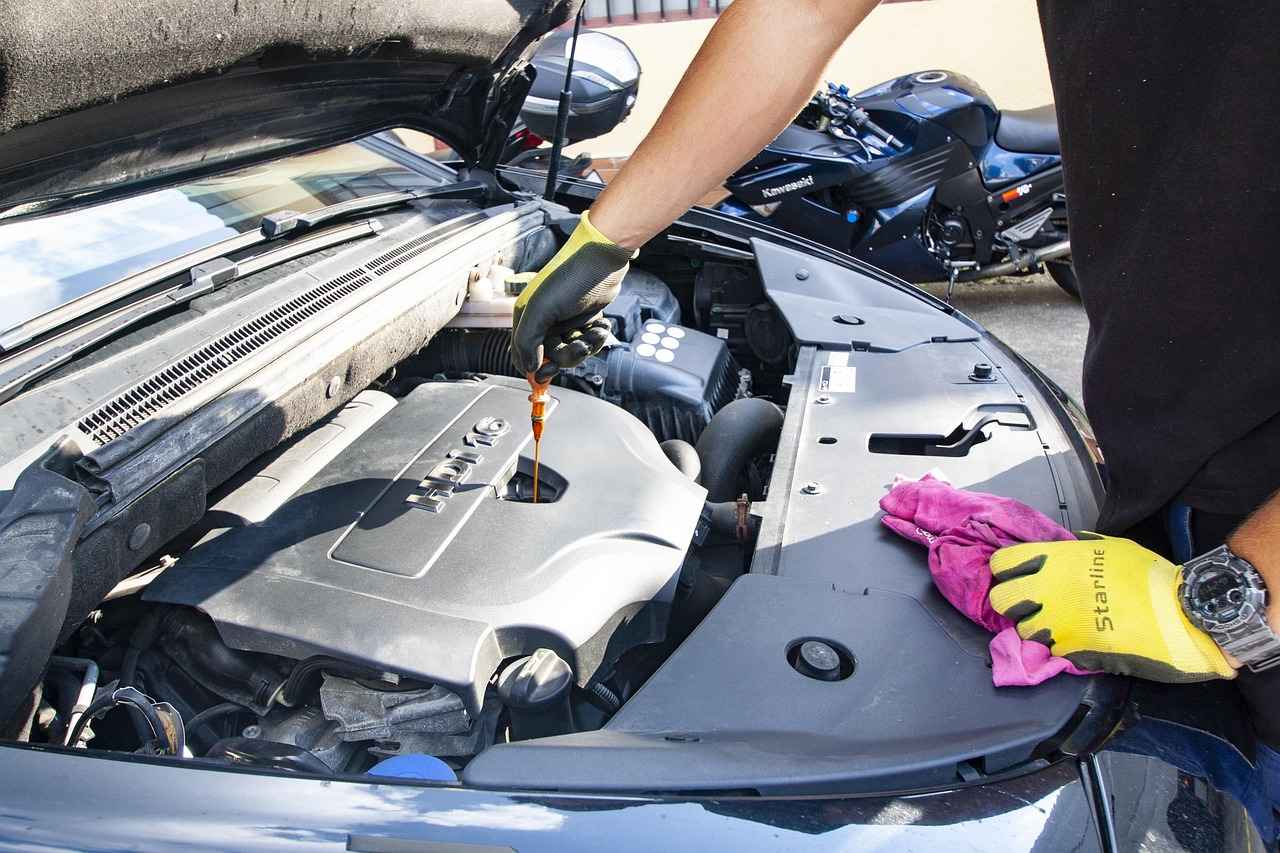
Why is Bleeding the Clutch Master Cylinder Important?
When it comes to vehicle maintenance, understanding the importance of bleeding the clutch master cylinder is essential for ensuring optimal performance. The clutch system relies on hydraulic pressure to function correctly, and any air trapped within the system can lead to significant issues.
What Happens When Air Enters the Hydraulic System? Air in the hydraulic system can result in poor clutch engagement. This means that when you press the clutch pedal, the clutch may not disengage fully, making it difficult to shift gears smoothly. In extreme cases, this can lead to transmission damage and costly repairs.
Furthermore, the presence of air can cause a spongy or unresponsive clutch pedal feel, which can affect overall driving safety. Therefore, addressing this issue promptly is crucial for maintaining your vehicle’s performance and reliability.
How Does Bleeding the Clutch Master Cylinder Help? Bleeding the clutch master cylinder effectively removes air from the hydraulic system, restoring proper pressure and functionality. This process ensures that the clutch engages and disengages as intended, providing a safer and more enjoyable driving experience.
Regular Maintenance is key to avoiding issues related to the clutch system. By incorporating bleeding into your routine vehicle checks, you can prevent air buildup and ensure that your clutch remains in optimal condition.
In addition, neglecting to bleed the clutch master cylinder can lead to premature wear of components, ultimately resulting in more significant problems down the line. By taking the time to bleed your clutch system, you not only enhance performance but also extend the lifespan of your vehicle’s components.
Is Bleeding the Clutch Master Cylinder a Complex Task? While it may sound daunting, bleeding the clutch master cylinder can be a straightforward process if you follow the right steps and have the necessary tools. With a little patience and attention to detail, you can ensure that your vehicle operates smoothly.
In conclusion, understanding the significance of bleeding the clutch master cylinder is crucial for vehicle performance. By removing air from the hydraulic system, you can avoid poor clutch engagement and potential damage, ensuring a safer driving experience. Regular maintenance and bleeding should be integral parts of your vehicle care routine.
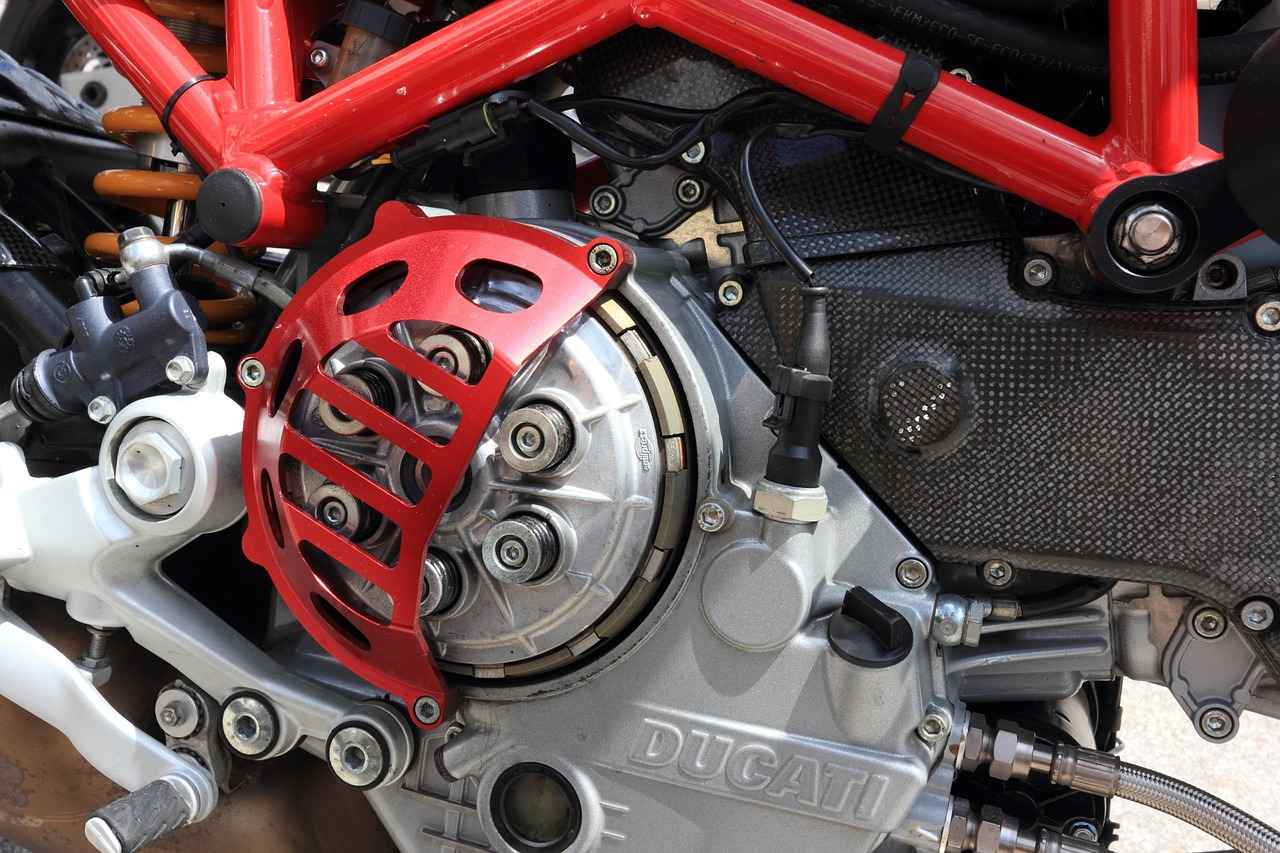
What Tools Do You Need for the Process?
When it comes to bleeding the clutch master cylinder, having the right tools is essential for a smooth and efficient process. The correct tools not only simplify the task but also ensure that the job is done safely and effectively. In this section, we will explore the key tools needed for this process and their specific purposes.
To successfully bleed your clutch master cylinder, you will require a few important tools. Here’s a detailed overview of each:
- Wrench: A wrench is crucial for loosening and tightening the bleeder valve on the clutch master cylinder. It is important to select a wrench that fits the valve properly, as using the wrong size can lead to stripping or damaging the valve.
- Clear Plastic Tube: A clear plastic tube is essential for monitoring the flow of brake fluid during the bleeding process. This allows you to see air bubbles being expelled from the system, ensuring that the bleeding is effective.
- Brake Fluid: High-quality brake fluid is vital for maintaining the integrity of the hydraulic system. Different vehicles may require specific types of brake fluid, so it is important to check your vehicle’s manual to ensure you are using the correct fluid.
- Container: A container is necessary to catch the old brake fluid and any air bubbles that may come out during the bleeding process. This helps keep your workspace clean and prevents spills.
- Rags or Towels: Having rags or towels on hand is useful for cleaning up any spills and maintaining a tidy workspace. Brake fluid can damage paint and other surfaces, so it’s important to clean up immediately.
- Safety Gear: Always wear safety goggles and gloves when working with brake fluid. This protects your eyes and skin from harmful chemicals.
By ensuring you have these tools ready before you start, you can streamline the bleeding process, making it more efficient and less prone to errors. Each tool plays a significant role in ensuring that air is effectively removed from the hydraulic system, which is critical for optimal clutch performance.
Understanding the role of each tool can help you appreciate their importance:
- Wrench: A properly sized wrench prevents damage to the bleeder valve and allows for secure tightening, which is essential for maintaining fluid pressure.
- Clear Plastic Tube: This tool is crucial for visual confirmation of the bleeding process. It allows you to see when all the air has been purged from the system, ensuring that only fluid is flowing.
- Brake Fluid: Using the right brake fluid type is vital for the hydraulic system’s functionality. Incompatible fluids can lead to system failure or damage.
- Container: A container not only keeps your workspace clean but also ensures that you can safely dispose of old brake fluid, which is hazardous to the environment.
By equipping yourself with the right tools and understanding their significance, you can approach the clutch bleeding process with confidence. This preparation not only enhances your efficiency but also contributes to the overall safety and performance of your vehicle.
Essential Tools Overview
When it comes to bleeding the clutch master cylinder, having the right tools is essential for a smooth and efficient process. Each tool plays a specific role that contributes to the overall effectiveness of the task. Below is a detailed overview of the essential tools needed for this procedure, highlighting their functions and importance.
- Wrench: A wrench is crucial for loosening and tightening the bleeder valve on the clutch master cylinder. It is important to select the correct size to prevent stripping the valve, which can lead to further complications. A box-end wrench is often recommended as it provides a secure grip and reduces the risk of slipping.
- Clear Plastic Tube: This tool is necessary to connect to the bleeder valve. The transparent nature of the tube allows you to monitor the fluid flow and identify any air bubbles that may be present in the system. Proper attachment of the tube ensures that brake fluid does not spill, which can be harmful to your vehicle’s paint and components.
- Brake Fluid: Using the right type of brake fluid is vital for maintaining the hydraulic system’s integrity. Different vehicles may require specific fluid types, such as DOT3, DOT4, or DOT5. Always refer to your vehicle’s manual to ensure compatibility. High-quality brake fluid not only prevents moisture absorption but also ensures optimal performance of the clutch system.
- Rags or Towels: Keeping rags or towels handy is critical for cleaning up any spills during the bleeding process. Brake fluid can damage paint and other surfaces, so having absorbent materials is a wise precaution. It also helps maintain a clean workspace, which is essential for an efficient and effective bleeding procedure.
- Container for Old Fluid: A container is necessary to collect the old brake fluid that is expelled during the bleeding process. Proper disposal of brake fluid is important, as it is toxic and harmful to the environment. Always check local regulations for disposal methods.
Understanding the specific functions of each tool not only simplifies the process but also enhances safety and effectiveness. By ensuring you have the right equipment, you can avoid common pitfalls and achieve a successful bleed of your clutch master cylinder. Remember, the right tools make all the difference in ensuring that your vehicle’s clutch system operates smoothly and reliably.
Wrench Specifications
When working on your vehicle’s clutch system, particularly during the bleeding process, understanding is crucial. The correct size wrench is essential for loosening and tightening the bleeder valve on the clutch master cylinder. Using the appropriate size wrench not only ensures ease of operation but also prevents potential damage to the valve and surrounding components.
Using a wrench that is too large can lead to slipping, which may strip the bleeder valve and create further complications. Conversely, a wrench that is too small can also result in damage, as it may not provide enough grip to effectively loosen or tighten the valve. Therefore, it is imperative to identify the correct size wrench before starting the bleeding process.
Typically, the size of the wrench needed for the bleeder valve on most clutch master cylinders ranges from 8mm to 12mm. However, it is advisable to consult your vehicle’s manual or specifications to determine the exact size required. This careful attention to detail can save you time and prevent unnecessary repairs.
In addition to size, the type of wrench you choose can also affect your efficiency during the process. A ratchet wrench or a box-end wrench is often recommended, as these types can provide a better grip and allow for easier maneuverability in tight spaces. This is particularly important in cramped engine bays where access can be limited.
Moreover, it is essential to ensure that your wrench is in good condition. A worn or damaged wrench can lead to slippage, increasing the risk of stripping the bleeder valve. Regularly inspect your tools for any signs of wear and replace them as necessary to maintain optimal performance.
In summary, selecting the correct size and type of wrench is fundamental when bleeding the clutch master cylinder. Not only does it facilitate a smoother process, but it also helps protect your vehicle’s hydraulic system from damage. Always prioritize quality and proper maintenance of your tools to ensure they function effectively when you need them most.
By following these guidelines, you can effectively manage the bleeding process of your clutch master cylinder, ensuring that your vehicle operates safely and efficiently.
Importance of Quality Brake Fluid
When it comes to ensuring the safety and performance of your vehicle, using high-quality brake fluid is of utmost importance. The brake fluid plays a critical role in the hydraulic system, affecting everything from brake responsiveness to the longevity of your vehicle’s braking components. In this section, we will explore the various types of brake fluid suitable for your vehicle and why selecting the right one is essential.
There are several types of brake fluid available, each with unique properties and specifications. The most common types include:
- DOT 3: This glycol-based fluid is widely used in many vehicles. It has a lower boiling point, making it suitable for standard driving conditions.
- DOT 4: With a higher boiling point than DOT 3, this fluid is ideal for vehicles that require greater performance, such as those used in demanding driving conditions.
- DOT 5: This silicone-based fluid is non-hygroscopic, meaning it does not absorb moisture. However, it is not compatible with other types of brake fluids, making it less common.
- DOT 5.1: This fluid combines the benefits of DOT 4 with the non-hygroscopic properties of DOT 5, making it suitable for high-performance applications.
Using high-quality brake fluid is crucial for several reasons:
- Boiling Point: Quality brake fluid has a higher boiling point, which is essential for preventing vapor lock during heavy braking, especially in high-performance or heavy-load scenarios.
- Moisture Resistance: High-quality brake fluids are less prone to absorbing moisture, which can lead to corrosion within the hydraulic system and decreased performance.
- Compatibility: Different vehicles require specific types of brake fluid. Using the wrong type can lead to system failure, reducing safety and performance.
Choosing the right brake fluid involves understanding your vehicle’s requirements. Here are some tips:
- Check your vehicle’s owner manual for the manufacturer’s recommended brake fluid type.
- Consider your driving habits. If you frequently drive in high-performance conditions, opt for a fluid with a higher boiling point.
- Look for reputable brands that adhere to industry standards, ensuring that the fluid meets the necessary specifications.
Using low-quality brake fluid can have severe consequences:
- Brake Failure: Inadequate fluid can lead to brake failure, putting you and others at risk.
- Corrosion: Poor-quality fluids can cause corrosion in the braking system, leading to costly repairs.
- Reduced Performance: Subpar fluid can compromise braking efficiency, affecting stopping distances and overall vehicle control.
In conclusion, the quality of brake fluid is paramount for maintaining the integrity of your vehicle’s hydraulic system. By understanding the types of brake fluid available, their properties, and the potential risks associated with poor-quality options, you can make informed decisions that enhance both safety and performance. Always consult your vehicle’s manual and choose fluids from reputable manufacturers to ensure optimal functionality.
Preparing Your Workspace
Creating a clean and organized workspace is essential for an efficient bleeding process of your clutch master cylinder. A well-prepared area not only enhances your productivity but also ensures safety while working on your vehicle. This section will guide you through the steps to effectively prepare your workspace.
- Choose the Right Location: Select a well-ventilated area with ample lighting. This helps you see clearly and reduces the risk of inhaling harmful fumes from brake fluid.
- Gather Necessary Tools: Before you start, ensure you have all necessary tools within arm’s reach. This includes a wrench, clear plastic tubing, brake fluid, and a catch container for old fluid. Keeping everything organized minimizes interruptions.
- Protect Your Surroundings: Lay down a protective tarp or old newspapers to catch any spills. Brake fluid can damage paint and other surfaces, so it’s important to safeguard your environment.
- Wear Appropriate Safety Gear: Equip yourself with safety goggles and gloves. Brake fluid can be corrosive, and personal protection is crucial to avoid skin irritation or eye damage.
- Organize Your Tools: Use a toolbox or a dedicated workbench to keep your tools organized. This not only saves time but also prevents misplacing important items during the process.
Having a systematic approach to setting up your workspace can significantly enhance your efficiency during the bleeding process. Here are some additional tips:
1. Clear the area of any unnecessary items.2. Ensure that your vehicle is on a flat surface and securely parked.3. If possible, use a jack stand for added safety.4. Keep a first aid kit nearby in case of accidents.
Once your workspace is set up, you can proceed with the bleeding process with confidence, knowing that you have created a safe and efficient environment. A clean workspace not only helps in maintaining focus but also reduces the chances of making mistakes. By following these guidelines, you will ensure that your clutch master cylinder bleeding process goes smoothly and effectively.
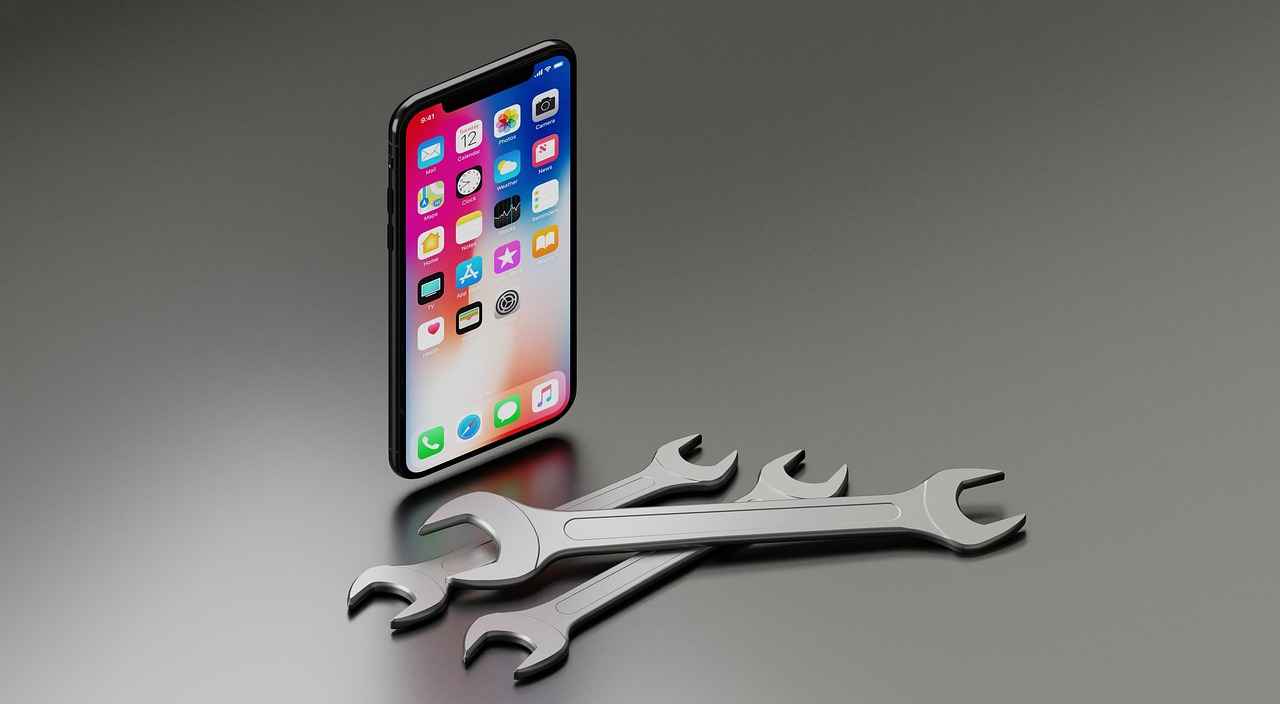
Step-by-Step Process to Bleed the Clutch Master Cylinder
Understanding how to bleed the clutch master cylinder is essential for maintaining your vehicle’s performance and safety. This process helps remove air from the hydraulic system, ensuring that your clutch operates smoothly. Below is a detailed, step-by-step guide to effectively bleed the clutch master cylinder.
Following a systematic approach is key to successfully bleeding the clutch master cylinder. This section outlines the detailed steps involved in the process.
- Wrench: Used to loosen and tighten the bleeder valve on the clutch master cylinder.
- Clear Plastic Tube: Allows you to see the fluid flow and prevents spills.
- Brake Fluid: Essential for the hydraulic system; ensure you have the correct type for your vehicle.
The first step is to locate the bleeder valve on the clutch master cylinder. This valve is typically found on the slave cylinder, which is mounted near the transmission. Ensure you have adequate lighting to see clearly and access the valve easily.
Once you have located the bleeder valve, attach the clear plastic tube securely over the valve. This will allow you to monitor the fluid as it flows out. Make sure the other end of the tube is positioned in a container to catch any fluid, preventing spills and mess.
Using your wrench, carefully open the bleeder valve. This will allow the hydraulic fluid and any trapped air to escape. It’s essential to do this slowly to avoid sudden bursts of fluid, which can create a mess and lead to air re-entering the system.
With the bleeder valve open, have an assistant pump the clutch pedal several times. This action helps push the hydraulic fluid out of the system, along with any air bubbles. After a few pumps, instruct your assistant to hold the pedal down while you close the bleeder valve to prevent air from re-entering.
Repeat the process of opening the bleeder valve, pumping the clutch, and closing the valve until you see a steady stream of fluid without air bubbles in the clear tube. This indicates that the system is free of air and is functioning correctly.
After successfully bleeding the clutch master cylinder, it’s crucial to check the brake fluid level in the reservoir. Ensure it is at the recommended level to prevent any issues with the hydraulic system in the future. Top up if necessary.
Finally, inspect the entire system for any leaks. This includes checking the bleeder valve, hoses, and connections. Addressing any leaks immediately will help maintain the integrity of the hydraulic system and ensure reliable clutch performance.
By following these steps, you can effectively bleed the clutch master cylinder, enhancing your vehicle’s clutch performance and safety. Regular maintenance, including this process, is essential for the longevity of your vehicle’s clutch system.
Step 1: Locate the Bleeder Valve
When it comes to maintaining your vehicle’s clutch system, locating the bleeder valve is a crucial first step in the bleeding process. This valve plays a significant role in ensuring that air is expelled from the hydraulic system, allowing for optimal clutch performance. In this section, we will explore where to find the bleeder valve and how to access it safely.
The bleeder valve is typically located on or near the clutch master cylinder. Here are some tips to help you find it:
- Consult Your Vehicle’s Manual: The owner’s manual often provides specific diagrams and locations for the bleeder valve.
- Look for the Clutch Master Cylinder: This component is usually found near the driver’s side of the engine bay, connected to the clutch pedal.
- Identify the Valve: The bleeder valve is a small, usually brass or metal fitting with a rubber cap, similar in appearance to a tire valve.
Once you’ve located the bleeder valve, it’s essential to access it safely to avoid any spills or accidents. Here are some steps to follow:
- Prepare Your Tools: Ensure you have the necessary tools ready, including a wrench that fits the bleeder valve, a clear plastic tube, and a container to catch any fluid.
- Wear Safety Gear: Always wear gloves and safety goggles to protect yourself from brake fluid, which can be corrosive.
- Clear the Area: Make sure the area around the bleeder valve is clean and free from debris to prevent contamination.
Accessing the bleeder valve properly is vital for several reasons:
- Prevents Damage: Using the wrong tools or excessive force can damage the valve, leading to costly repairs.
- Ensures Effective Bleeding: A clear and unobstructed access allows for a more efficient bleeding process, ensuring all air is removed from the system.
- Enhances Safety: Proper access minimizes the risk of spills and accidents, keeping you and your vehicle safe during maintenance.
In summary, finding and accessing the bleeder valve is the first step toward effectively bleeding your clutch master cylinder. By following the guidelines outlined above, you can ensure a smooth process that enhances your vehicle’s performance and safety.
Step 2: Attach the Hose and Open the Valve
When it comes to bleeding the clutch master cylinder, one of the most critical steps is ensuring that you attach a clear plastic hose to the bleeder valve properly. This step is essential for monitoring fluid flow and preventing spills during the bleeding process. Below, we detail how to perform this task effectively.
Using a clear plastic hose allows you to visually monitor the fluid as it flows out of the bleeder valve. This visibility is crucial because it helps you identify when all the air has been purged from the system. Additionally, a clear hose minimizes the risk of contamination, ensuring that only clean brake fluid is used in the hydraulic system.
- Gather Your Materials: Before you begin, ensure you have a clean, clear plastic hose, a wrench, and a container to catch the fluid.
- Position the Hose: Slide one end of the clear plastic hose over the bleeder valve. Ensure it fits snugly to prevent any leaks.
- Secure the Hose: If necessary, use a clamp to secure the hose in place. This will help prevent any accidental disconnections during the bleeding process.
- Prepare the Collection Container: Place the other end of the hose into a suitable container to catch the fluid. Make sure the container is positioned lower than the bleeder valve to allow gravity to aid in fluid flow.
Once the hose is securely attached, you can proceed to open the bleeder valve. Here’s how:
- Use the Correct Wrench: Select a wrench that fits the bleeder valve snugly to avoid stripping.
- Turn the Valve Slowly: Begin to turn the bleeder valve counterclockwise slowly. This gradual approach helps prevent sudden fluid release, which can cause spills.
- Monitor Fluid Flow: As you open the valve, watch the clear plastic hose. You should see fluid beginning to flow through it. If you notice air bubbles, it indicates that air is being purged from the system.
To ensure a successful bleeding process, consider the following:
- Work in a Clean Environment: A clean workspace reduces the risk of contaminants entering the hydraulic system.
- Check Fluid Levels Regularly: Keep an eye on the brake fluid reservoir. If it runs low, you may introduce more air into the system.
- Close the Valve Promptly: Once you see a steady stream of fluid without bubbles, close the bleeder valve promptly to prevent any backflow.
By following these steps, you can effectively attach the clear plastic hose to the bleeder valve and open it without spilling fluid. This attention to detail is essential for maintaining the integrity of your clutch system and ensuring optimal vehicle performance.
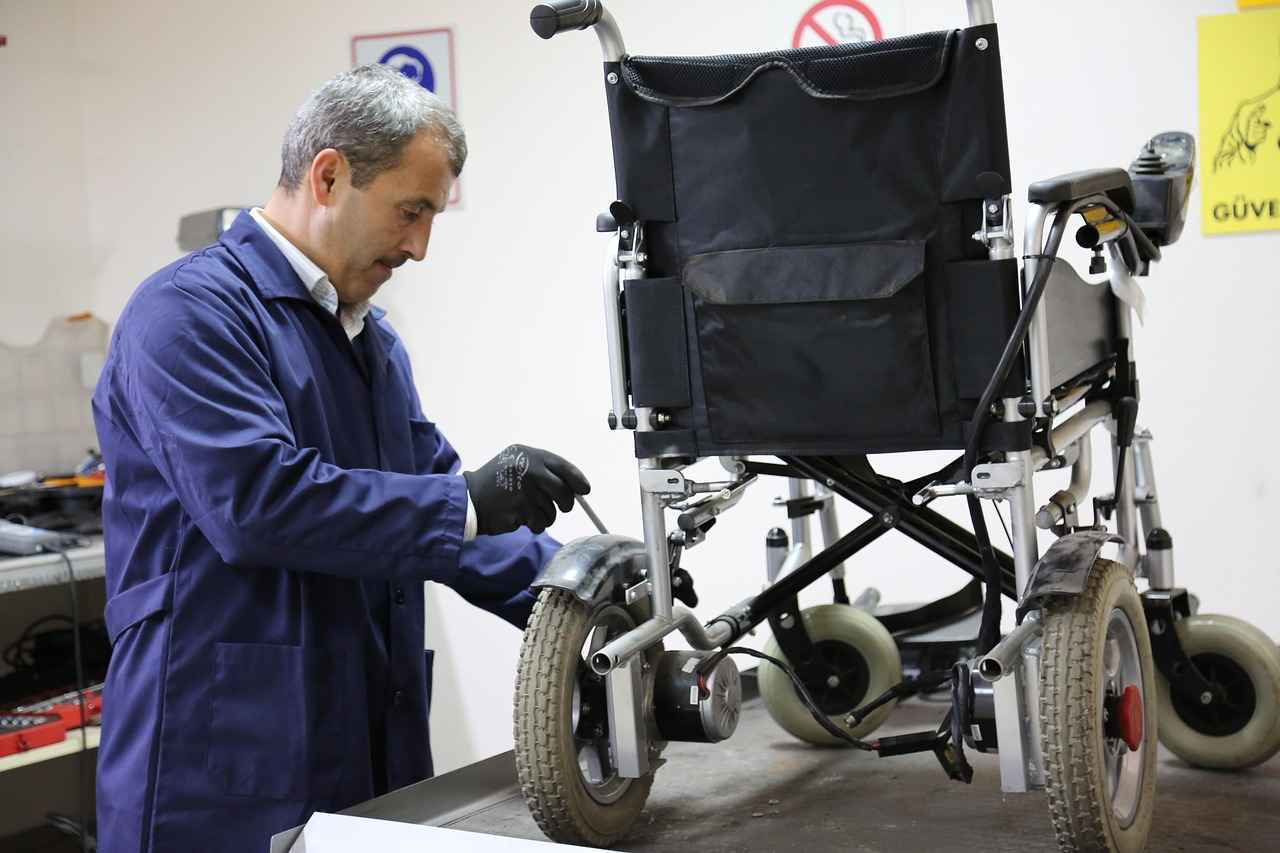
Common Mistakes to Avoid When Bleeding
When it comes to bleeding the clutch master cylinder, avoiding common pitfalls is essential for ensuring a smooth and effective process. Mistakes can lead to wasted time, unnecessary frustration, and even potential damage to your vehicle’s hydraulic system. This section will outline frequent errors and provide guidance on how to steer clear of them.
- Not Using the Right Brake Fluid: One of the most critical mistakes is using the incorrect type of brake fluid. Different vehicles require specific types of fluid, and using the wrong one can cause serious damage to the hydraulic system. Always consult your vehicle’s owner manual to determine the suitable brake fluid.
- Overlooking the Importance of Cleanliness: Failing to maintain a clean workspace can introduce contaminants into the hydraulic system. It is vital to keep the area around the bleeder valve clean and free from debris. Use a clean cloth to wipe any dirt or grime from the valve before starting the bleeding process.
- Neglecting to Check for Leaks: After completing the bleeding process, it’s crucial to check for leaks. Neglecting this step can result in ongoing issues, such as air re-entering the system or fluid loss. Always inspect the bleeder valve and surrounding areas for any signs of leakage.
- Skipping the Pre-Bleeding Inspection: Before starting the bleeding process, ensure that the clutch master cylinder and associated components are in good condition. Check for any signs of wear or damage, as these can affect the bleeding process and overall performance of the clutch.
- Failing to Maintain Proper Fluid Levels: During the bleeding process, it’s essential to keep an eye on the fluid levels in the reservoir. If the fluid level drops too low, air can be drawn back into the system, negating your efforts. Regularly top off the fluid as needed to maintain optimal levels.
- Not Using a Clear Hose: When attaching a hose to the bleeder valve, using a clear plastic tube is highly recommended. This allows you to monitor the flow of fluid and air bubbles easily. If you use an opaque hose, you may miss crucial signs that indicate whether the bleeding process is successful.
- Rushing the Process: Bleeding the clutch master cylinder requires patience. Rushing through the steps can lead to missed details or improper bleeding. Take your time to ensure that each step is performed thoroughly and correctly.
- Ignoring Manufacturer Recommendations: Always refer to your vehicle’s service manual for specific instructions and recommendations regarding the bleeding process. Each vehicle may have unique requirements that must be followed for optimal results.
By being aware of these common mistakes and taking proactive steps to avoid them, you can ensure a successful clutch bleeding process. This not only saves time but also enhances the performance and longevity of your vehicle’s clutch system. Remember, a well-maintained clutch is crucial for safe and efficient driving.
Not Using the Right Brake Fluid
When it comes to maintaining your vehicle’s hydraulic system, using the correct brake fluid is not just a recommendation; it is a necessity. Using incorrect brake fluid can lead to severe damage, compromising both the performance and safety of your vehicle. This section delves into the risks associated with using the wrong type of brake fluid and why it is essential to choose wisely.
Brake fluid is a critical component in your vehicle’s hydraulic system, enabling the effective transfer of force from the brake pedal to the brakes themselves. Using the wrong type of fluid can introduce a host of problems, including:
- Corrosion: Many brake fluids contain additives that can corrode metal components. For instance, using a glycol-based fluid in a system designed for silicone-based fluid can lead to rapid deterioration of seals and metal parts.
- Boiling Point Issues: Different types of brake fluids have varying boiling points. Using a fluid with a lower boiling point can result in vapor lock, which can make your brakes feel spongy and unresponsive.
- Contamination: Mixing different types of brake fluid can lead to contamination, affecting the fluid’s performance and potentially leading to system failure.
To avoid the pitfalls of incorrect brake fluid usage, it is crucial to identify the correct type for your vehicle. Here are some tips:
- Consult the Owner’s Manual: Your vehicle’s owner manual will specify the correct type of brake fluid, whether it is DOT 3, DOT 4, or DOT 5.1.
- Check for Compatibility: Ensure that the fluid you choose is compatible with your vehicle’s hydraulic system. For example, DOT 5 is not compatible with systems designed for glycol-based fluids.
- Look for Quality Certifications: Choose brake fluids that meet the necessary industry standards and certifications, ensuring reliability and safety.
Recognizing the signs of using incorrect brake fluid can help you address issues before they escalate:
- Unresponsive Brakes: If your brakes feel soft or unresponsive, it may be a sign of vapor lock or fluid contamination.
- Fluid Leaks: Check for leaks around the brake lines and master cylinder. Incorrect fluid can cause seals to fail, leading to leaks.
- Warning Lights: Pay attention to warning lights on your dashboard, as they may indicate issues with the braking system.
Changing your brake fluid regularly can prevent the issues associated with using the wrong type. Here’s how to do it:
1. Gather the necessary tools: wrench, new brake fluid, and a clear tube.2. Locate the brake fluid reservoir and remove the cap.3. Use a syringe or turkey baster to remove the old fluid.4. Refill the reservoir with the correct type of brake fluid.5. Bleed the brakes using the appropriate method to ensure no air is present in the system.6. Check for leaks and ensure proper fluid levels.
In summary, using the right brake fluid is crucial for maintaining your vehicle’s hydraulic system. By understanding the risks associated with incorrect fluid, identifying the correct type, and recognizing the signs of potential issues, you can ensure a safer driving experience.
Neglecting to Check for Leaks
When it comes to maintaining your vehicle’s clutch system, after bleeding the clutch master cylinder can lead to serious, ongoing issues. This crucial step is often overlooked, yet it plays a vital role in ensuring the functionality and longevity of your vehicle’s clutch system.
After completing the bleeding process, which removes air bubbles from the hydraulic system, it is imperative to conduct a thorough inspection for any signs of leakage. Failing to do so can result in a range of problems, including:
- Reduced Clutch Performance: Even minor leaks can lead to a decrease in hydraulic pressure, making it difficult for the clutch to engage and disengage smoothly.
- Increased Wear and Tear: Leaks can cause fluid to escape, leading to inadequate lubrication and increased wear on clutch components.
- Safety Hazards: A compromised clutch system can result in unexpected vehicle behavior, posing a safety risk to the driver and others on the road.
To effectively check for leaks, start by visually inspecting the clutch master cylinder and the lines connected to it. Look for any signs of fluid accumulation or wetness around the fittings and connections. Additionally, consider the following methods:
1. **Pressure Test:** Pump the clutch pedal a few times and hold it down. Check for any fluid dripping or seeping from the master cylinder or surrounding areas.2. **Fluid Level Check:** After bleeding, monitor the fluid level in the reservoir. A sudden drop in fluid level can indicate a leak.3. **Feel for Moisture:** Run your fingers along the lines and connections to detect any moisture that may not be immediately visible.
It is also advisable to allow the vehicle to sit for a short period after bleeding and then re-inspect the area. This helps to identify any slow leaks that may not have been evident during the initial inspection.
In conclusion, taking the time to check for leaks after bleeding the clutch master cylinder is a simple yet essential step that can prevent future complications. By ensuring that your clutch system is free of leaks, you can enhance its performance, prolong its lifespan, and maintain a safe driving experience. Always prioritize thorough inspections as part of your vehicle maintenance routine.

How to Test the Clutch After Bleeding
After completing the clutch bleeding process, it is vital to ensure that the clutch system is functioning properly. Testing the clutch not only confirms that the bleeding was successful but also helps identify any potential issues that may arise. This section will provide you with a detailed guide on how to effectively test the clutch after bleeding.
Testing the clutch after bleeding is essential for several reasons:
- Ensures Proper Functionality: Verifying that the clutch engages and disengages smoothly is critical for safe driving.
- Prevents Future Issues: Early detection of problems can save you from costly repairs down the line.
- Enhances Driving Experience: A well-functioning clutch provides better control and responsiveness.
Begin by pressing the clutch pedal down fully and then releasing it. Pay attention to:
- Pedal Feel: The pedal should feel firm and not spongy.
- Engagement Point: Note where the clutch engages. It should be in the upper half of the pedal travel.
- Disengagement: Ensure the clutch disengages completely when the pedal is pressed.
While engaging and disengaging the clutch, listen for any unusual noises:
- Grinding Sounds: These may indicate that the clutch is not fully disengaging.
- Clunking Noises: This could suggest issues with the clutch components or misalignment.
After testing the clutch, it is important to check the fluid level in the reservoir:
- Fluid Level: Ensure the fluid level is within the recommended range.
- Fluid Condition: Look for any discoloration or debris, which could indicate contamination.
Finally, take your vehicle for a short road test. During the drive, pay attention to:
- Shifting Smoothness: Gears should shift smoothly without resistance.
- Clutch Engagement: The engagement should feel natural and responsive.
While testing the clutch, be mindful of these common issues:
- Spongy Pedal: This may indicate air still trapped in the hydraulic system.
- Difficulty Shifting: This could be a sign of a worn clutch or issues with the clutch master cylinder.
- Fluid Leaks: Check for any signs of leaking fluid around the master cylinder or slave cylinder.
In summary, testing the clutch after the bleeding process is a crucial step in ensuring the reliability and performance of your vehicle’s clutch system. By following these steps, you can confirm that everything is functioning correctly and address any potential issues promptly.
Engagement and Disengagement Check
Testing the engagement and disengagement of the clutch is a critical step in ensuring that your vehicle operates safely and efficiently. This process allows you to assess the functionality of the clutch system, which is essential for smooth gear transitions and overall vehicle performance. In this section, we will explore effective methods to evaluate these functions, ensuring that your clutch operates as intended.
Understanding how to test the clutch engagement and disengagement is vital for several reasons. First and foremost, proper engagement ensures that the clutch connects the engine to the transmission effectively, allowing for smooth power transfer. Conversely, disengagement is crucial for shifting gears without grinding or damaging the transmission. If either function is compromised, it can lead to significant mechanical issues and safety hazards.
To test clutch engagement, follow these steps:
- Start the Engine: Begin by starting your vehicle and allowing it to warm up.
- Press the Clutch Pedal: Fully depress the clutch pedal to the floor.
- Shift Gears: Attempt to shift into first gear. If the gear engages smoothly without resistance, the clutch is functioning properly. If you experience difficulty or grinding, further investigation is needed.
Testing the disengagement of the clutch is equally important. Here’s how to do it:
- Start with the Engine Running: Keep the engine running and press the clutch pedal down completely.
- Shift to Neutral: Move the gear lever to the neutral position.
- Release the Clutch: Gradually release the clutch pedal. If the engine does not stall and the vehicle remains stationary, the clutch is disengaging correctly. If the vehicle moves or stalls, it indicates a problem with the disengagement mechanism.
While testing the engagement and disengagement of the clutch, be aware of common signs that may indicate underlying issues:
- Slipping Clutch: If the engine revs without a corresponding increase in vehicle speed, it may indicate a slipping clutch.
- Difficulty Shifting Gears: Struggling to shift gears, especially into first or reverse, can suggest engagement problems.
- Unusual Noises: Grinding or clunking sounds during gear changes may point to disengagement issues.
If you notice any of the signs mentioned above or if your tests indicate that the clutch is not engaging or disengaging properly, it’s essential to seek professional assistance. A qualified mechanic can diagnose the issue accurately and recommend necessary repairs or adjustments to ensure your vehicle remains safe to drive.
In summary, testing the engagement and disengagement of your clutch is a straightforward yet vital process. Regular checks can prevent further complications and enhance your vehicle’s performance. By following the outlined steps and being aware of potential issues, you can maintain your clutch system effectively and ensure a smooth driving experience.
Fluid Level Verification
After completing the bleeding process of your clutch master cylinder, it is essential to conduct a thorough . This step is not merely a formality; it plays a critical role in ensuring the optimal performance of your clutch system. Neglecting to check the fluid level can lead to inadequate hydraulic pressure, resulting in poor clutch engagement and potential damage to the system.
Fluid level verification is crucial because the hydraulic system relies on a specific amount of fluid to function correctly. If the fluid level is too low, air can re-enter the system, negating the benefits of the bleeding process. Additionally, maintaining the correct fluid level helps to prevent corrosion and other issues that can arise from inadequate lubrication.
To accurately check the fluid level in the reservoir, follow these simple steps:
- Locate the Reservoir: The clutch master cylinder reservoir is typically found near the back of the engine bay. It is usually a small, translucent container that allows you to see the fluid level without opening it.
- Inspect the Fluid Level: Look at the markings on the side of the reservoir. There are usually minimum and maximum lines indicating the appropriate fluid levels. Ensure that the fluid sits between these two markers.
- Add Fluid if Necessary: If the fluid level is below the minimum line, it is essential to add the correct type of brake fluid as specified in your vehicle’s manual. Use a funnel to avoid spills and ensure that you do not overfill the reservoir.
Using the right type of brake fluid is vital for the health of your clutch system. Most vehicles require either DOT 3, DOT 4, or DOT 5.1 brake fluid. Always refer to your vehicle’s owner manual to confirm the appropriate type. Using the wrong fluid can lead to serious damage to the hydraulic components.
Many vehicle owners make mistakes when checking the fluid level. Here are some common pitfalls to avoid:
- Not Cleaning the Reservoir Cap: Before opening the reservoir, clean the cap and surrounding area to prevent dirt from entering the system.
- Ignoring Fluid Condition: Besides checking the level, inspect the fluid’s condition. It should be clear and free of debris. If it appears dark or contaminated, consider replacing it.
- Forgetting to Secure the Cap: After checking and adding fluid, always ensure that the reservoir cap is securely fastened to prevent contamination and fluid loss.
It is advisable to check the fluid level regularly, especially after any significant driving or if you notice changes in clutch performance. Additionally, if you have had to add fluid frequently, this could indicate a leak in the system that requires immediate attention.
In summary, fluid level verification is a vital step in maintaining the health and functionality of your clutch system. By following these guidelines, you can ensure that your vehicle operates smoothly and safely.
Frequently Asked Questions
- What happens if I don’t bleed the clutch master cylinder?
If you skip bleeding the clutch master cylinder, air can get trapped in the hydraulic system. This can lead to poor clutch engagement, making it difficult to shift gears. Think of it like trying to drink a milkshake through a straw with a hole in it—frustrating and ineffective!
- How often should I bleed the clutch master cylinder?
It’s generally recommended to bleed the clutch master cylinder every 2 years or whenever you notice a change in clutch performance. Just like you wouldn’t let your car go without an oil change, keeping your clutch system fresh is essential for smooth driving.
- Can I use regular brake fluid for my clutch?
While some people might think any brake fluid will do, it’s crucial to use the type specified for your vehicle. Using the wrong fluid can damage the hydraulic components. It’s like using soda instead of water for your plants—definitely not a good idea!
- Is it difficult to bleed the clutch master cylinder myself?
Not at all! With the right tools and a little patience, you can do it yourself. Just follow the steps carefully, and you’ll save both time and money. It’s like cooking a new recipe—just take it step by step!


